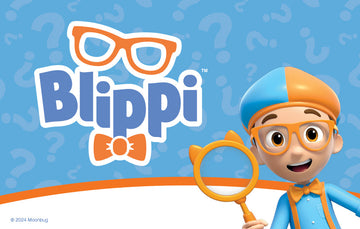The holiday season is a magical time, especially for children who look forward to festive activities. Creating a Christmas scavenger hunt brings excitement and joy, allowing kids to explore while engaging with the spirit of the season. This interactive game not only entertains but also encourages teamwork and problem-solving skills.
Setting up the scavenger hunt involves simple steps that can be tailored to various age groups and settings. Utilizing holiday-themed clues and incorporating local traditions keeps the activity relevant and fun. With some creativity and planning, it can become a memorable family experience that children will cherish.
As families gather and celebrate, organizing a scavenger hunt transforms ordinary holiday moments into extraordinary adventures. This engaging activity ensures children are not just passive participants but active explorers of the festive season.
Understanding the Scavenger Hunt Concept
A scavenger hunt is an engaging activity that encourages exploration and teamwork. Kids search for specific items or complete tasks based on clues provided.
The basic idea of a scavenger hunt is simple: participants receive a list of items to find or actions to complete. This can take place indoors or outdoors, making it flexible for any environment.
Key Elements of a Scavenger Hunt
- List of Items: Create a clear list that includes all the items to be found.
- Clues: Provide hints to guide kids to each item.
- Teams or Individuals: Decide whether kids will work alone or in groups.
- Time Limit: Setting a timer can add excitement and urgency.
The benefit of a scavenger hunt is that it fosters problem-solving skills. As kids interpret clues and strategize with their teammates, they develop critical thinking.
Additionally, it promotes physical activity. Running around to find hidden treasures keeps everyone active and engaged.
Creating a festive theme can enhance the experience. Incorporating Christmas ornaments, candy canes, or holiday-themed riddles makes the hunt more enjoyable and memorable for children.
A scavenger hunt can turn a holiday gathering into an adventure, creating lasting memories for everyone involved.
Benefits of a Scavenger Hunt for Kids
A Christmas scavenger hunt offers various advantages for children. Here are some key benefits:
-
Encourages Problem-Solving: Kids learn to think critically as they search for clues and items. This promotes creativity and enhances their ability to solve puzzles.
-
Promotes Physical Activity: Running around and searching for items helps keep children active. Physical movement is important for their health and well-being.
-
Enhances Social Skills: Participating in a scavenger hunt often involves teamwork. Kids practice communication, cooperation, and sharing with their peers.
-
Boosts Observation Skills: Searching for specific items improves children’s attention to detail. They become more aware of their surroundings.
-
Fosters Excitement and Engagement: The thrill of the hunt keeps kids engaged and entertained. It adds an element of fun to holiday celebrations.
-
Creates Lasting Memories: Experiences shared with family and friends during the hunt can create cherished memories. These moments strengthen bonds and traditions.
A scavenger hunt is not only fun but also educational. It helps kids develop essential life skills in a joyful and interactive way.
Planning Your Christmas Scavenger Hunt
Creating a Christmas scavenger hunt for kids involves thoughtful preparation. Key aspects include selecting a theme, determining the location, crafting a list of items, and setting clear rules for the hunt.
Theme Selection
Choosing a theme sets the tone for the scavenger hunt. Popular themes include "Santa's Helpers," "Winter Wonderland," or "Christmas Treats."
When selecting a theme, consider the interests of the children. For example, if they love animals, a "Winter Wildlife" theme could be engaging.
Incorporate elements of the theme in clues and items. This keeps the adventure exciting and contextually relevant. It encourages imagination while searching for items related to the chosen theme.
Determining the Location
The location plays a crucial role in the hunt's success. Consider whether the scavenger hunt will take place indoors, outdoors, or both.
A backyard or local park offers natural hiding spots, while a home provides safe, controlled environments. Make sure the area is safe and accessible for the kids.
Mark boundaries to ensure the kids do not wander too far. This helps maintain order and allows for easy supervision. Moreover, ensure the selected location aligns with the theme for a cohesive experience.
Creating a List of Items
Developing a list of items to find is essential for the scavenger hunt. Start by including festive items like ornaments, candy canes, or holiday-themed decorations.
Using a mix of easy and challenging items makes the hunt enjoyable for all age groups. Aim for around 10-15 items to keep it manageable and exciting.
Consider incorporating clues or riddles related to each item. This adds an extra layer of fun and engages kids’ problem-solving skills.
Organize the list in a simple format, such as a table or a checklist, so it is easy for the kids to follow.
Setting the Rules
Clear rules help the scavenger hunt run smoothly. Start by explaining how the hunt will operate; for instance, if it’s timed or involves teamwork.
Establish boundaries to keep kids safe and focused. If certain areas are off-limits, communicate this clearly.
Encourage fair play by outlining how to find and collect items. For example, explain if each child gets a turn, or if items can be collected individually.
Lastly, set a reward for the winner or participants to motivate them. This could be small prizes or holiday treats, enhancing the experience and excitement of the hunt.
Crafting the Clues
Creating engaging clues is essential for a successful Christmas scavenger hunt. The right clues keep children excited and help them navigate the hunt. Tailoring clues to the participants’ age and interests adds a personal touch.
Write Age-Appropriate Clues
When crafting clues, consider the age of the participants. Younger children benefit from simpler clues, such as straightforward riddles or picture hints. For instance, a clue like "Look where you sleep" points to their bedroom.
Older kids can handle more complex clues. Utilizing wordplay or puzzles can challenge them. For example, riddles or word scrambles increase engagement. Adjusting the difficulty ensures everyone remains involved and entertained.
Incorporate Festive Elements
Integrating festive elements into the clues enhances the holiday spirit. Use Christmas-themed words or references. For example, clues can mention Santa Claus, reindeer, or popular holiday songs.
Consider using holiday decorations as inspiration. A clue could state, "Find the next surprise near the twinkling lights." This method immerses the children in the festive atmosphere while keeping the hunt exciting.
Hint Formats and Varieties
Variety keeps the scavenger hunt interesting. Clues can take many forms, such as riddles, word searches, or even direct instructions. For example, a riddle might read, “My branches go up but I’m not a tree, find your next clue where I might be.”
Visual clues work well, too. Incorporating pictures or symbols helps younger children connect clues with locations. Alternatively, a treasure map can guide kids to the next hint, adding an adventurous twist.
By mixing different hint formats, the hunt remains fresh and engaging throughout.
Preparation and Setup
Preparing for a Christmas scavenger hunt is essential for ensuring an enjoyable experience for kids. Gathering the right supplies, setting up clue stations effectively, and prioritizing safety are key steps in this process.
Gathering Supplies
Essential supplies contribute to a successful scavenger hunt. Start with clue cards or envelopes to hold hints. Craft festive notes that lead to various locations.
Include small prizes for participants to discover at each station. These could be Christmas-themed trinkets like stickers, ornaments, or candies.
A backpack or bag is useful for each child to collect their prizes.
Additionally, consider using decorative items like ribbons or bells to enhance the festive atmosphere.
Lastly, have a timer handy if planning a race against time to increase excitement.
Setting Up Clue Stations
Setting up clue stations is vital for creating an engaging hunt. Choose 5-10 locations around the house or yard where clues can be cleverly hidden.
Start by deciding on a theme for the clues that aligns with Christmas. For instance, using Santa's reindeer or holiday treats can boost excitement.
Each clue should lead to the next location, creating a flow. Hide each clue in an obvious spot to keep the game fun, not frustrating.
Consider including visual aids like maps or drawings. These can help younger kids follow along while learning the layout of the space.
Ensure each station has a small gift or treat as a reward. This adds motivation and makes the experience memorable.

Safety Considerations
Safety is a priority when organizing a scavenger hunt. Begin by assessing the areas where the scavenger hunt will take place.
Identify any hazards such as steps, slippery surfaces, or busy roads, and ensure these areas are marked.
Assign an adult or older child to monitor younger participants. This supervisory role helps prevent accidents and keeps kids on track.
Provide clear ground rules beforehand. Discuss boundaries and ensure children know where they can and cannot go.
Lastly, be mindful of allergies. Inform all participants of any snacks or treats involved to guarantee everyone can enjoy the event safely.
Execution of the Hunt
Effective execution of the scavenger hunt ensures that kids have fun while engaging with the holiday spirit. The following steps are essential for a smooth and enjoyable experience.
Starting the Scavenger Hunt
To kick off the scavenger hunt, gather all participants and explain the rules clearly. Provide each child with a list of items to find or clues to follow. It helps to set a specific start point and signal with a fun countdown or bell.
Before starting, ensure all kids understand how to solve clues or identify items. Visual aids, like pictures of the items, can be beneficial. Encourage teamwork by allowing them to pair up or form groups. This promotes cooperation and makes the hunt more enjoyable.
Supervising the Participants
Supervision is critical to keeping the scavenger hunt safe and enjoyable. Designate adults or older children as supervisors at various checkpoints. They can provide assistance if participants struggle with clues or need help, ensuring everyone feels supported.
Keeping an eye on the participants also helps maintain order. If kids get too competitive, gentle reminders about fun and teamwork can refocus their energy. It is essential to engage with the children, cheering them on and celebrating their discoveries to keep spirits high.
Managing the Pace
Pacing is vital to ensure that all participants have an enjoyable time. Set a clear timeframe for the scavenger hunt, typically between 30 to 60 minutes, depending on complexity. Communicating this timeframe helps kids manage their energy and enthusiasm while searching.
Watch for signs that kids may be losing interest. If necessary, adjust the pace by allowing them to move to the next clue or provide hints to maintain engagement. Keeping the momentum flowing ensures that everyone stays excited and absorbed in the hunt.
Finalizing the Scavenger Hunt
Bringing a Christmas scavenger hunt to a close requires careful planning and attention to detail. The final steps focus on celebrating the participants, rewarding their efforts, and reflecting on the event.
Concluding the Event
As the scavenger hunt wraps up, it’s important to gather everyone together. This moment provides an opportunity to share experiences and highlight memorable moments.
Organizers can encourage children to talk about their favorite finds or adventures during the hunt. A brief group discussion helps to create shared memories and deepens connections.
A simple round of applause can also enhance the atmosphere, making participants feel appreciated for their efforts. Offering thank yous to parents and volunteers acknowledges their contributions to the event's success.
Awarding Prizes
Prizes make the scavenger hunt exciting and memorable. Consider various options:
- Certificates: Custom-designed certificates can recognize participation or specific achievements, such as finding the most items.
- Small Toys: Age-appropriate toys related to Christmas can delight young hunters.
- Goodie Bags: Filled with festive treats, these can be fun surprises for each child.
Distributing prizes can be done in a celebratory ceremony. It fosters a sense of accomplishment and encourages friendly competition. Ensure every child receives a prize to keep the spirit joyful.
Debrief and Feedback
Gathering feedback is essential for improving future scavenger hunts. This can be done through casual conversations or a quick feedback form.
Ask children what they liked and what could be enhanced. Parents can offer valuable insights too. Consider questions such as:
- What was the most enjoyable part of the scavenger hunt?
- Were the clues challenging enough?
- Do they have suggestions for next time?
This process helps organizers understand the event's impact and make necessary adjustments. Engaging the participants in this way encourages a sense of ownership and excitement for future events.
Additional Tips and Tricks
Planning a Christmas scavenger hunt can come with surprises. Here are some practical tips to tackle unforeseen circumstances, ensure inclusivity, and promote eco-friendliness.
Handling Unexpected Situations
Flexibility is key when things don’t go as planned. If weather conditions are unfavorable, such as rain or snow, move the scavenger hunt indoors. You can adjust the clues to fit the indoor setting.
Be prepared with backup activities if kids finish early or lose interest. Having a list of fun alternatives, like holiday crafts or baking sessions, can keep the fun going.
If a child feels overwhelmed or tired, create a quiet space where they can regroup. Remember, the goal is to ensure everyone enjoys the experience.
Inclusive Activities for All Kids
Inclusion is crucial for a successful scavenger hunt. To engage children of varying ages and abilities, consider different types of clues.
For example, use picture clues for younger kids alongside written riddles for older participants. This allows everyone to contribute according to their skills.
Creating teams with mixed-age groups encourages cooperation. Each team member can play to their strengths, enhancing communication. Also, consider sensory clues to accommodate kids with sensory sensitivities, like scented or textured items.
Making the Scavenger Hunt Eco-Friendly
Incorporating eco-friendly practices can make the hunt more sustainable. Use recyclable materials for clues and decorations. Avoid plastic and opt for items that can be reused or composted.
Consider incorporating nature-themed clues that encourage exploration of outdoor spaces. This not only teaches kids about nature but also fosters appreciation for the environment.
Encourage participants to bring reusable bags for collecting items. This small step reduces waste while keeping the focus on fun and engagement.





